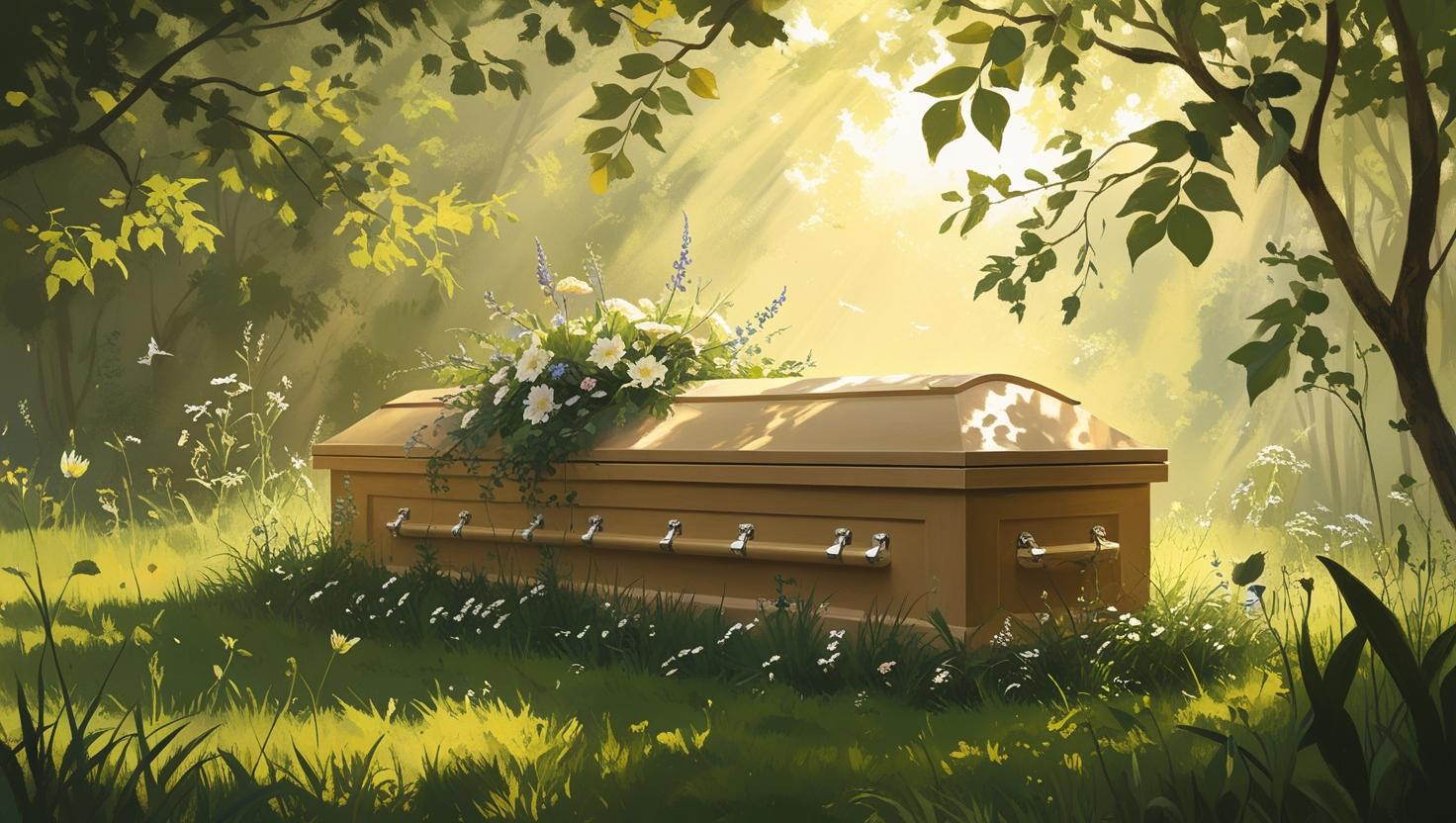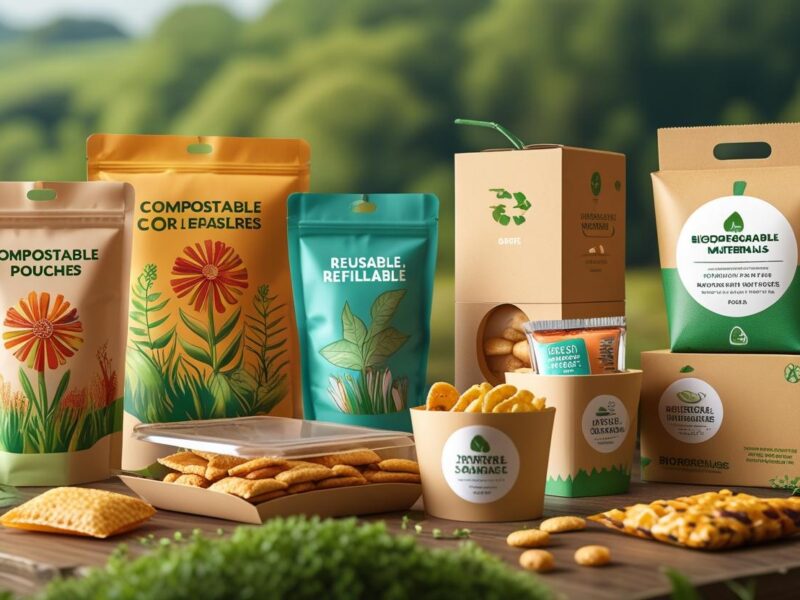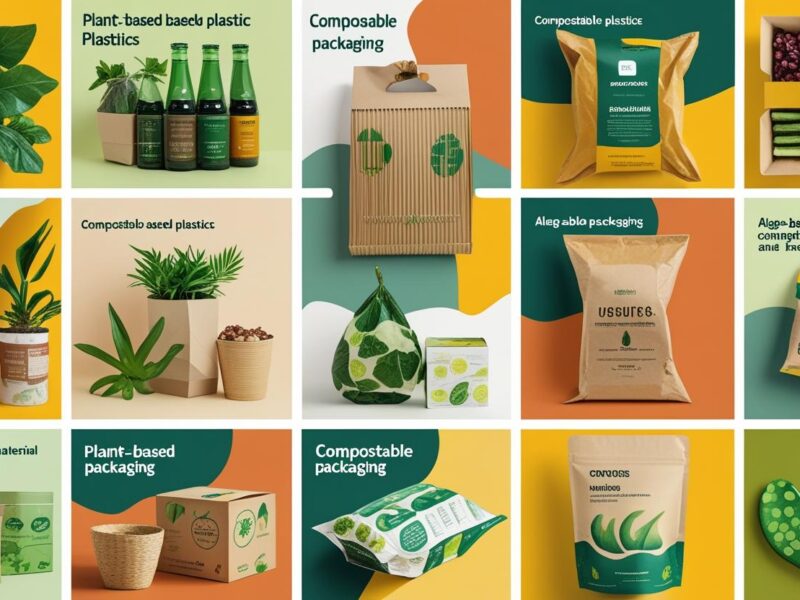Discover eco-friendly burial options that reduce environmental impact and offer a sustainable way to honor loved ones. Explore green burial choices and more.

Eco-Friendly Burial: A Sustainable Farewell
The funeral industry has traditionally relied on practices that are not very environmentally friendly. From embalming chemicals to non-biodegradable coffins, conventional burial methods can have a lasting negative impact on the environment. In recent years, however, a growing number of people are seeking alternatives—eco-friendly burial options that prioritize sustainability and reduce harm to the planet.
Eco-friendly burial focuses on minimizing the ecological footprint of one’s final resting place. These practices are designed to blend with nature, using materials and techniques that promote environmental health. In this comprehensive guide, we will explore the most popular eco-friendly burial options, their benefits, and why they are becoming a preferred choice for many individuals.
What is an Eco-Friendly Burial?
An eco-friendly burial is an environmentally conscious alternative to traditional burial practices. The goal is to minimize the impact on the earth, using natural materials, reducing pollution, and avoiding harmful chemicals. Eco-friendly burials generally follow principles of sustainability and allow the body to decompose in harmony with the surrounding environment.
Key Characteristics of an Eco-Friendly Burial:
- Natural decomposition: No embalming fluids or preservatives.
- Biodegradable materials: Coffins or shrouds made from organic materials.
- Minimal environmental disturbance: Choosing burial sites that conserve natural resources and wildlife habitats.
- Carbon-neutral approach: A focus on offsetting the carbon footprint involved in the burial process.

Popular Types of Eco-Friendly Burial
There are several types of eco-friendly burial methods available, each offering its own unique benefits. Here are the most common choices for those looking for a greener, more sustainable option:
Green Burial
A green burial is the most widely recognized form of eco-friendly burial. It involves burying the body without embalming and using biodegradable caskets or shrouds made from organic materials such as wood, bamboo, or wool. The idea is to allow the body to decompose naturally, promoting a return to the earth without synthetic additives.
Benefits of Green Burial:
- Sustainability: No chemicals or non-biodegradable materials.
- Conservation of land: Green burial sites are often conservation areas.
- Natural decomposition: The body breaks down naturally, enriching the soil.
Water-Based Burial (Aquamation)
Aquamation, or water cremation, is an innovative alternative to traditional cremation and burial. Using water and alkaline chemicals, the body is broken down in a process that is much gentler on the environment compared to conventional cremation. The process uses significantly less energy and produces fewer emissions, making it a more sustainable choice.
Benefits of Aquamation:
- Reduced carbon emissions: Less energy-intensive than traditional cremation.
- Less pollution: No toxic gases or chemicals released.
- Eco-friendly: Water-based process uses fewer resources.
Forest Burial
Forest burials take place in designated woodland areas, where the deceased’s body is laid to rest under a tree or in a natural burial plot. The goal is to create a permanent and living memorial in the forest, with the burial site acting as part of the natural ecosystem. Trees are often planted in memory of the deceased.
Benefits of Forest Burial:
- Biodiversity support: Forest burial sites promote the health of local ecosystems.
- Natural beauty: A serene, peaceful resting place surrounded by nature.
- Memorialization: The tree or plant used as a memorial can continue to grow and thrive.
Bios urn Burial
A bios urn is a biodegradable urn used for the burial of cremated remains. Unlike traditional urns, bios urns contain a seed that allows the remains to become a living memorial, as the ashes nurture the growth of a tree or plant. This is a perfect way to honor someone by contributing to the environment and creating a lasting tribute in nature.
Benefits of Bios Urn Burial:
- Eco-friendly: Made from biodegradable materials.
- Sustainability: Converts remains into a growing tree or plant.
- Memorial tree: Provides a lasting and living tribute.

Benefits of Eco-Friendly Burial
Opting for an eco-friendly burial is a meaningful choice that offers numerous benefits—not just for the planet, but for families, communities, and individuals who seek a connection with nature in their final resting place.
Environmental Impact
One of the most significant benefits of eco-friendly burials is their positive impact on the environment. Traditional burial practices, such as using metal caskets and embalming fluids, can lead to the contamination of groundwater, soil degradation, and excessive carbon emissions. Eco-friendly burials help reduce these risks and promote a cleaner, greener future.
Lower Carbon Footprint
Eco-friendly burials typically have a lower carbon footprint compared to traditional methods. For example, green burials avoid the need for energy-intensive cremation or the use of fossil fuels. Moreover, some eco-friendly burial options, like forest burials and bios urns, contribute positively to the environment by planting trees or promoting conservation.
Emotional and Spiritual Benefits
Choosing an eco-friendly burial allows individuals to feel a sense of peace knowing that their final resting place is contributing positively to the earth. Many people find comfort in the idea that their loved one’s body is being returned to nature, helping to preserve it for future generations.
How to Plan an Eco-Friendly Burial
Planning an eco-friendly burial involves a few key steps, which require thoughtful consideration. Here’s how you can begin the process:
1. Choose a Green Cemetery
The first step in planning an eco-friendly burial is finding a green cemetery that aligns with your values. Look for cemeteries that follow green burial practices, such as using biodegradable materials and avoiding the use of toxic chemicals. Some cemeteries also offer conservation options, ensuring that the land is preserved for future generations.
2. Select a Biodegradable Casket or Shroud
Next, you’ll need to choose a biodegradable casket or shroud. Common materials include untreated wood, bamboo, seagrass, and cardboard. Shrouds made from organic fabrics like cotton or wool are also a popular choice.
3. Avoid Embalming
Embalming is a common practice in traditional burials, but it involves the use of harmful chemicals like formaldehyde. For an eco-friendly burial, avoid embalming, as it interferes with the natural decomposition process. Natural preservation options, such as refrigeration, can be considered as alternatives.
4. Incorporate Memorial Trees or Plants
Many eco-friendly burial options, like forest burials and bios urns, involve planting a tree or other vegetation as a living memorial. This is an ideal way to commemorate your loved one while also contributing positively to the environment.

Eco-Friendly Burial and Legal Considerations
Before deciding on an eco-friendly burial, it’s essential to familiarize yourself with the legal regulations in your area. Laws governing green burials vary by country and region, so it’s crucial to ensure that your chosen burial method complies with local guidelines.
Permits and Regulations
Certain green burial practices, such as forest burials, may require special permits, especially if you’re burying a loved one on private property. Some jurisdictions may also have specific guidelines regarding biodegradable caskets and the use of embalming fluids.
Cemetery Requirements
Some green cemeteries have their own rules about what is allowed in terms of caskets, shrouds, and other burial materials. Be sure to consult the cemetery’s policies before making any decisions.
Frequently Asked Questions (FAQs)
1. What is the difference between a green burial and a traditional burial?
A green burial involves using biodegradable materials and avoiding chemicals, while traditional burials often use metal caskets, embalming fluids, and non-biodegradable materials.
2. Can I still have a memorial service with an eco-friendly burial?
Yes, you can still hold a memorial service with an eco-friendly burial. Many green cemeteries allow for personalized services while adhering to sustainable practices.
3. Is aquamation safer for the environment than cremation?
Yes, aquamation is considered a more environmentally friendly option than traditional cremation because it uses less energy and produces fewer pollutants.
4. Are forest burials legal everywhere?
Forest burials are not legal everywhere, as they require specific permits and compliance with local regulations. It’s important to check with the local authorities or green cemeteries to ensure it’s allowed in your area.
5. How can I find a green cemetery near me?
You can search online for green burial options in your region or contact local funeral homes that specialize in eco-friendly services to find green cemeteries in your area.
A Sustainable Legacy
Eco-friendly burials offer a meaningful, sustainable way to honor the deceased while contributing positively to the planet. By choosing alternatives like green burials, aquamation, or forest burials, families can ensure that their loved one’s legacy is both respectful and eco-conscious. Whether you’re considering a biodegradable casket or a memorial tree, the options available today allow for a more harmonious and environmentally responsible approach to death and remembrance.
Choosing an eco-friendly burial is not just about reducing environmental harm; it’s about creating a lasting impact, preserving natural resources, and leaving a legacy that continues to benefit the earth. Make the choice that aligns with your values and leaves a meaningful imprint for generations to come.



One thought on “What Are the Different Eco-Friendly Burial Options Available?”